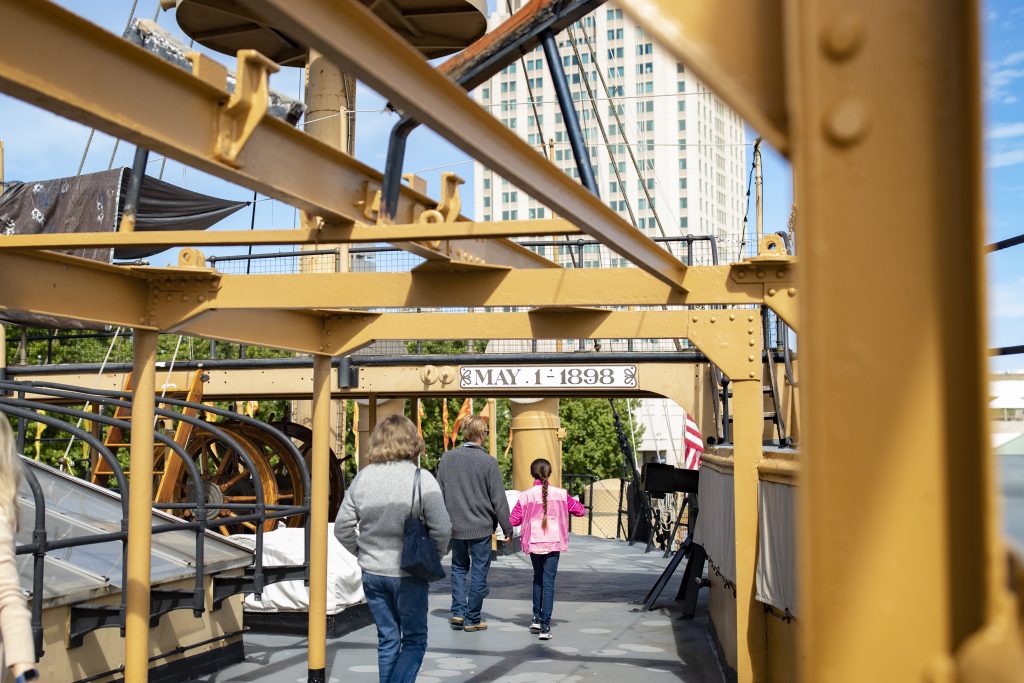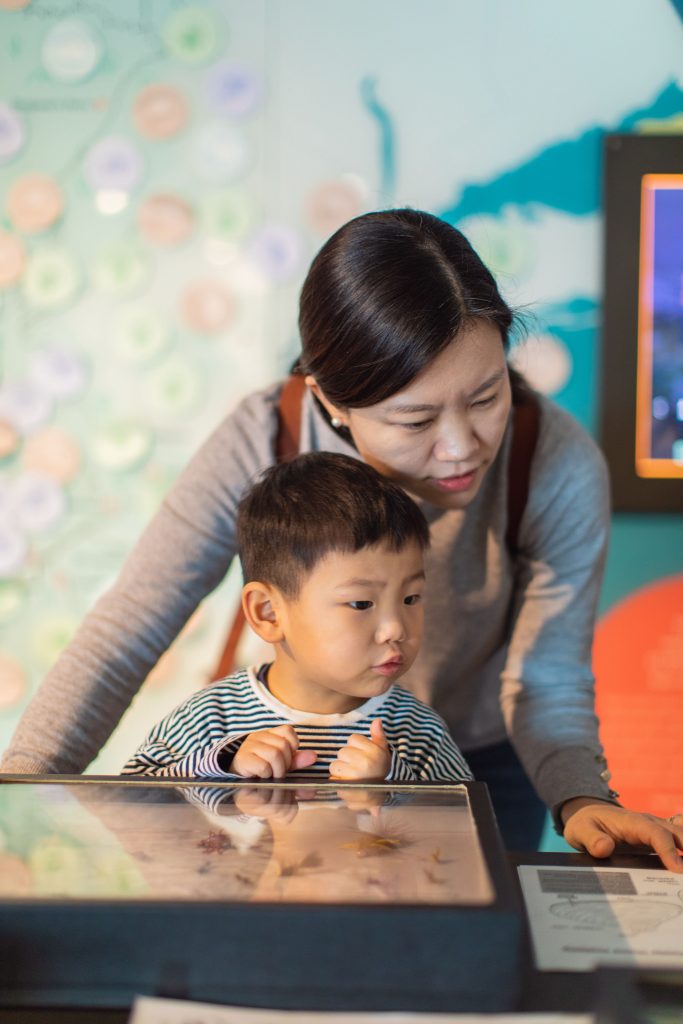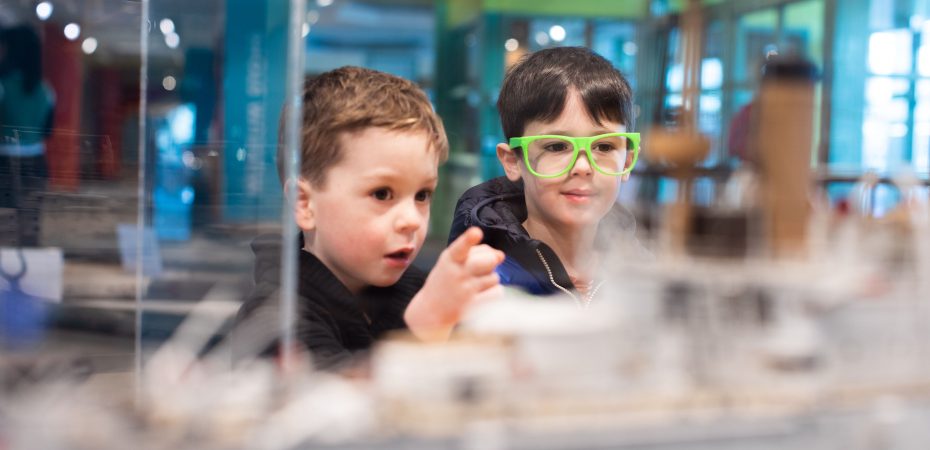The Independence Seaport Museum, located along the Delaware River, invites visitors of all ages to discover Philadelphia’s river of history and world of connections. The museum building is home to award-winning exhibitions through which the stories of those who lived and worked along our regional waterways are told. The museum’s two ships, the Olympia and the Becuna, connect the city to the rest of the world, telling stories about the people and culture they have interacted with on their journeys. These stories are woven into every aspect of the visitor’s journey, from the first time they enter the lobby to when they walk off the gangway of Olympia.

Upon entering, guests will step into an introductory exhibition, comprised of four sections, that focuses on different themes of the museum’s collections: Philadelphia’s American Revolutionary naval history; the pop culture mania for Admiral George Dewey, who commanded America’s naval forces in the Pacific during the Spanish-American War of 1898; the recreational use of the waterway; and Philadelphia’s shipyards that have been an integral part of our nation’s maritime history. Items on display include favorites (such as Dennis Stephens, also known as the “Tin Man”), recent acquisitions, and treasures from the museum’s permanent collection. Many of these have rarely, if ever, been on display, such as a signal book, dated from 1777, that was owned by Admiral Richard Howe of the Royal Navy.
Visitors then continue their exploration through two floors of exhibitions, all of which have Philadelphia’s waterways as the unifying thread. Patriots & Pirates, for example, tells the story of how the city of Philadelphia had a significant role in the founding of the United States Navy and includes displays featuring pieces such as the octant Captain John Barry, known as the “Father of the Navy,” used throughout his entire career. Right across the hall is the exhibition River Alive!, which focuses on the Delaware River and how its health is crucial and essential to the health of all those in our community. Fun fact: 15 million people drink water from the river, which equates to 5% of the U.S. population!
On the second floor, guests will be able to learn about the people who lived and worked along the water, from canal boatmen to newly arrived immigrants seeking economic and religious freedom in At the Water’s Edge: Working and living along the Delaware River. Tides of Freedom: African Presence on the Delaware River examines four critical moments in Philadelphia’s history, representing the themes of Enslavement, Emancipation, Jim Crow, and Civil Rights. This encourages visitors to bear witness to a story central to the city’s and country’s history and to think about the meaning of “freedom” both historically and in today’s world.
Guests of all ages can also climb aboard the museum’s two historic ships, Olympia and Becuna*.

Olympia, a nineteenth-century cruiser, is the oldest remaining steel warship afloat in the world. The United States Navy first placed her into commission in February 1895 as a state-of-the-art man of war. The ship rose to fame as Commodore (later Admiral) George Dewey’s flagship during the Battle of Manila Bay. As an icon of her era, her last act fittingly was to return the American Unknown Soldier from World War I home to Arlington National Cemetery from Le Havre, France.
Becuna is a Balao-class submarine that was launched in January 1944 after just nine months of construction before being commissioned on May 27th of that year. From serving in the Pacific during World War II to her service as a training vessel in New London, CT, the submarine has earned her marks of distinction and historical significance. After 25 years of service, Becuna was decommissioned in November 1969. She was brought to the Philadelphia Navy Yard, where she was placed in reserve as part of the Atlantic Reserve Fleet. In July 1976, as part of the bicentennial celebration of the country’s founding, she was brought to Penn’s Landing and opened as a museum.
Whether interested in maritime tradition, naval history, or stories of our regional waterways, the Independence Seaport Museum has something for everyone. Come sea what you’ll discover.
For more information, visit Independence Seaport Museum.
*Additional fees may apply.

 Courtesy of Independence Seaport Museum
Courtesy of Independence Seaport Museum